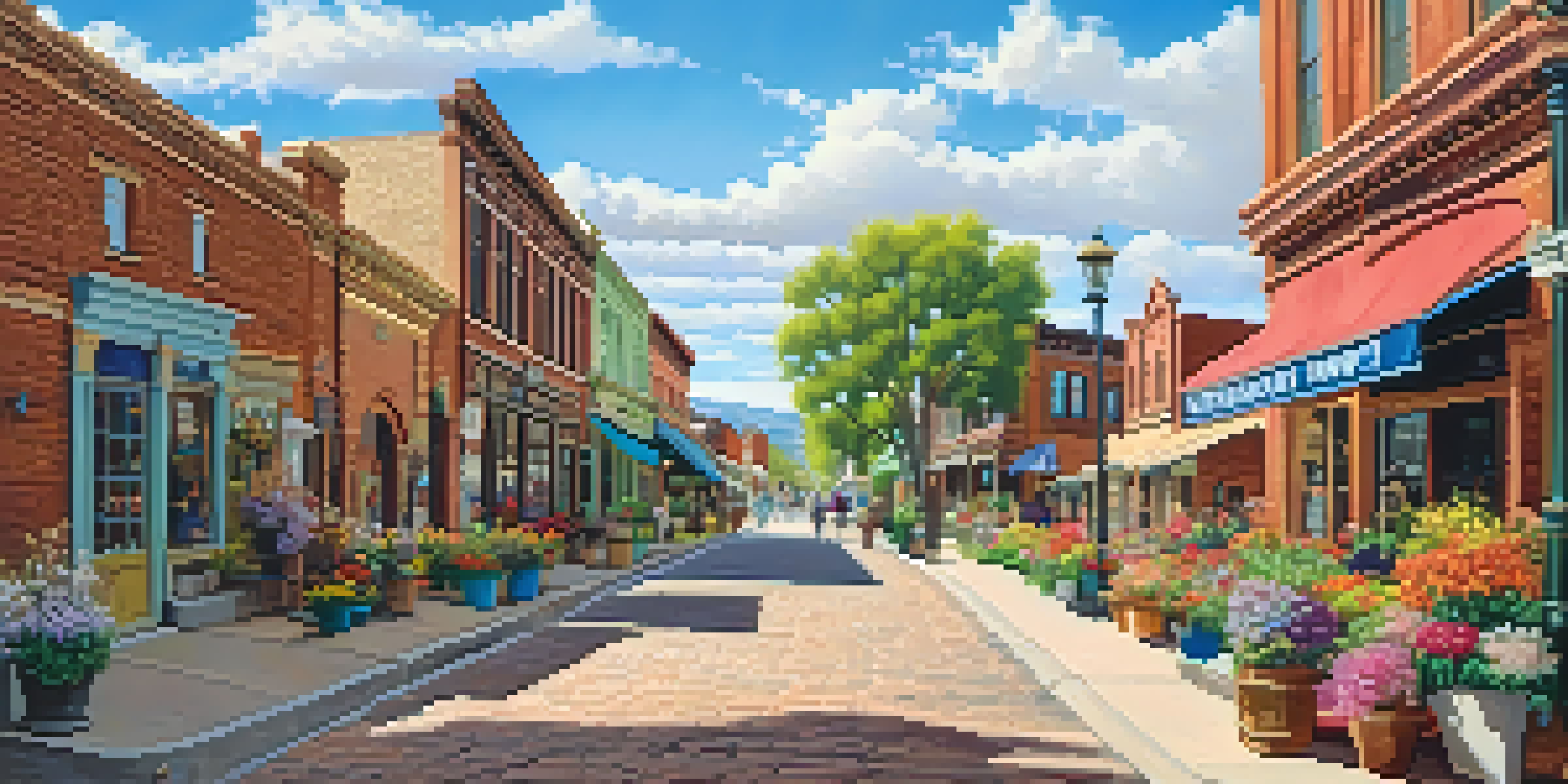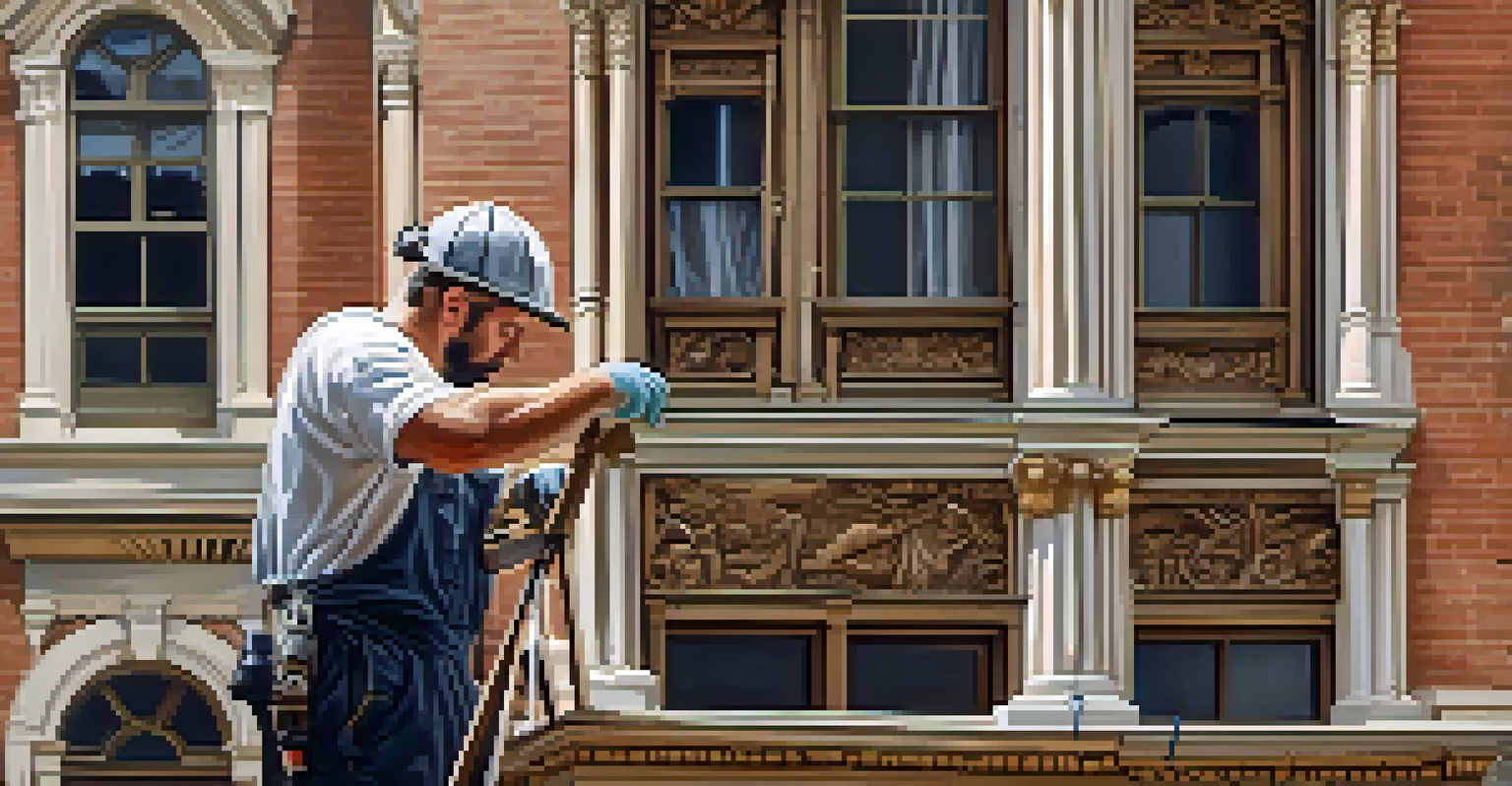Preserving Colorado's Historic Architecture: Key Challenges

Understanding the Importance of Historic Architecture
Historic architecture tells the story of Colorado's rich cultural heritage. Each building reflects the unique history and identity of the communities that built them. Preserving these structures is vital not only for aesthetic reasons but also for maintaining a tangible connection to the past.
Preservation is a powerful catalyst for community revitalization and economic development.
In many cases, these buildings serve as landmarks that attract tourism and foster local pride. They can also be repurposed for modern use, providing a blend of the old and new. By understanding their importance, we can better appreciate the need for preservation efforts.
However, the value of historic architecture often goes beyond mere nostalgia; it can have economic benefits as well. Revitalizing these sites can boost local economies through tourism and increased property values, making preservation a wise investment for communities.
Financial Constraints in Preservation Projects
One of the most significant challenges in preserving historic architecture is the financial burden. Restoration and maintenance can be costly, often requiring funds that are hard to come by. Many organizations rely on grants, donations, or government support, which may not always be available.

Moreover, the costs can escalate quickly if proper maintenance is neglected over time. Structural issues, outdated systems, and the need for specialized materials can lead to unexpected expenses. This financial unpredictability can deter potential investors from taking on preservation projects.
Historic Architecture's Cultural Value
Historic architecture connects communities to their past, serving as a source of pride and potential economic growth.
Communities often face the tough decision of prioritizing new developments over preserving historic sites, viewing them as less lucrative. Finding a balance between financial feasibility and heritage conservation remains a crucial challenge in the preservation landscape.
Navigating Regulatory and Legal Hurdles
Preservation efforts are often met with a maze of regulations and legal requirements. Local, state, and federal laws can complicate the restoration process, making it difficult for project leaders to navigate. Understanding these regulations is essential for successful preservation.
Historic preservation is an economic development tool that helps create jobs, attract tourists, and enhance neighborhood quality of life.
In some cases, properties may be designated as historic landmarks, which can restrict the types of alterations that can be made. While these regulations aim to protect the integrity of the buildings, they can also hinder necessary updates and renovations. This creates a tension between preserving history and accommodating modern needs.
Engaging with legal experts and local preservation boards can help mitigate these challenges. However, the time and resources required to comply with regulations can be daunting for many organizations, which adds another layer of complexity to preservation initiatives.
Community Engagement and Support for Preservation
Community support plays a critical role in the success of preservation efforts. When residents are passionate about their local history, they are more likely to advocate for preserving historic sites. Engaging the community through educational programs and events can foster this enthusiasm.
Collaboration with local organizations and historical societies can also enhance community involvement. These groups can help raise awareness and rally support for preservation projects. When people feel a sense of ownership over their local heritage, they are more inclined to contribute time and resources to its preservation.
Financial Struggles in Preservation
Preserving historic sites often faces financial challenges, requiring careful planning and community support to overcome.
However, building this support can be challenging, especially in communities where historic sites are at risk of neglect. Finding ways to communicate the value of preservation to diverse groups is essential for garnering broad-based support and ensuring long-term success.
Environmental Challenges in Architecture Preservation
Preserving historic architecture also involves addressing environmental challenges, such as climate change. Extreme weather events can damage older buildings, leading to deterioration that may not have been anticipated. Understanding these risks is crucial for effective preservation strategies.
Additionally, older structures may not be equipped to handle modern environmental standards, which poses a dilemma for preservationists. Upgrading these buildings while maintaining their historical integrity can be a complex task. This balancing act requires innovative solutions that respect the past while preparing for the future.
Incorporating sustainable practices into preservation efforts can help mitigate some of these challenges. By using eco-friendly materials and energy-efficient systems, preservationists can enhance the longevity of historic structures while honoring their original design.
The Role of Technology in Preservation
Technology is increasingly playing a pivotal role in preserving historic architecture. Digital tools and techniques, such as 3D scanning and modeling, allow preservationists to document and analyze structures in detail. This information can guide restoration efforts and help maintain accuracy.
Moreover, technology can facilitate virtual tours and educational resources, making historic architecture accessible to a broader audience. This can enhance community engagement and raise awareness about the importance of preservation. By leveraging technology, preservationists can reach new audiences and foster a deeper appreciation for their efforts.
Community Engagement is Crucial
Active community involvement is essential for the success of preservation efforts, fostering a sense of ownership and advocacy.
However, reliance on technology must be balanced with traditional preservation methods. Ensuring that both approaches complement each other is crucial for effective and respectful restoration practices.
Future Directions for Historic Preservation in Colorado
Looking ahead, the future of historic preservation in Colorado hinges on a combination of innovative strategies and community involvement. Emphasizing education and outreach will be vital for raising awareness about the significance of preserving these architectural treasures. Engaging younger generations can create a lasting legacy of appreciation for historic sites.
Collaboration among various stakeholders, including government agencies, non-profits, and local residents, will be essential for overcoming challenges. By working together, communities can develop comprehensive preservation plans that align with their unique needs and values.

Ultimately, the challenge lies in finding sustainable ways to protect Colorado's rich architectural heritage while embracing change. By addressing these challenges with creativity and commitment, we can ensure that the stories behind these buildings continue to inspire future generations.